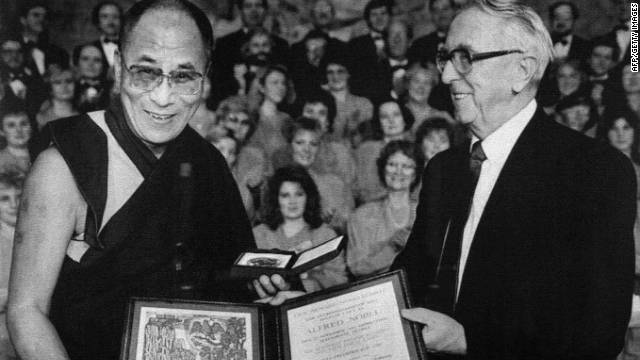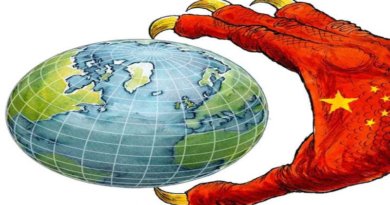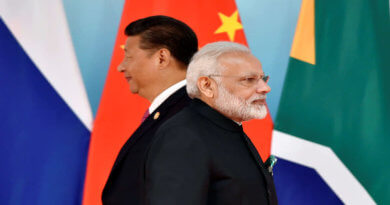Until a favorable solution is reached
By Choenyi Woser
It has been close to 63 years since the infamous 17-point Agreement was signed under duress between Tibet and China and 55 years since the Tibetan National Uprising in Lhasa. However, Chinese repression in Tibet still continues in the form of extrajudicial killings, arbitrary detentions, torture and lengthy jail terms. For more than half a century, Tibetans inside Tibet and in exile have protested Chinese occupation through various methods, including more recently self-immolation protests.
Tibetan people’s struggle against China concerns not only human rights and ownership of one’s native land, but the nature of this struggle has largely been non-violent. These days when oppressed people protest against occupying countries and authoritarian regimes, they are labeled as ‘terrorists’; this labeling is a convenient tool for the oppressors to justify their oppression.
But resisting the violent excesses of police and armed security forces with mere sticks and stones during political protests or to destroy the symbols of China’s so-called development in Tibet is not a terrorist act. It can never be compared to killing of innocent people in terrorist attacks. Perhaps there exists apprehension among some Tibetans at being labeled terrorist and violent.
To pursue a peaceful struggle without creating needless trouble for others represents moral discipline of the Tibetan people who under the guidance of their leader and Nobel peace laureate, His Holiness the Dalai Lama have stuck to a non-violent struggle. According to old Tibetan sayings known to older generation of Tibetans, “You must sacrifice your life to reclaim what’s rightfully yours” and “Loss of life and blood should be avenged”. It is not like that these days. Tibetans have suffered in Chinese prisons and sacrificed their lives through self-immolation protests without harming the lives and property of Chinese people. In this way, Tibetans have displayed one of the highest forms of non-violent freedom movement the world has ever witnessed.
And yet the Chinese government continues to accuse Tibetan activists of engaging in violent activities and acting under the direction of exile separatist forces, putting all the blame on His Holiness the Dalai Lama and the Central Tibetan Administration. Tibetan people have the highest regard for His Holiness and his teachings on non-violence. Even then, can someone really take one’s own life at the instigation of others? If happiness exists in Tibet as claimed by the Chinese government, wouldn’t one enjoy that happiness than sacrifice one’s life in protest? Likewise, will one sacrifice his/her life if incited by the Chinese government? The fact is Tibetans give up their lives for freedom because they can no longer bear the pain of Chinese repression.
The exile Tibetan administration under the Middle Way Policy (MWP) proposed by His Holiness the Dalai Lama hopes to achieve ‘genuine autonomy’ for the Tibetan people under the leadership of the Chinese Communist Party. On a number of occasions, the representatives of His Holiness the Dalai Lama met with their Chinese counterparts for talks, with the Tibetan representatives submitting in writing the aspirations of Middle Way Policy. But these attempts have failed to deliver desired results; instead the Chinese government has always found one excuse or the other to criticize the Middle Way proposal.
The MWP aims to find a viable solution to the Tibetan issue by avoiding two extremes: neither accepting the current political arrangement in Tibet nor pursuing independence for Tibet. Despite this, the Tibetan Youth Congress and a number of individual Tibetans continue to call for an independent Tibet. And China continues with its repressive rule in Tibet. If common Tibetans call for independence, it will not harm the prospects of talks between Tibetan and Chinese representatives. The day a final agreement is reached between the two sides, Tibetan people will decide whether to accept it or not. Prior to that, if Tibetans give up pursuing independence, then the MWP’s rationale of pursuing a ‘middle’ approach between two ‘extremes’ will be lost, eventually leading to the total decimation of the Tibetan struggle under Chinese repression.
There are many who reason that it is impractical to seek independence for Tibet. They cite the growing number of Chinese migrants in Tibet as one reason for the impossibility of Tibet getting independence. Since Chinese now outnumber the native Tibetan inhabitants in many places in Tibet, they say it would be impossible to expel them out of Tibet. But there is no need for the expulsion of Chinese or other nationalities if Tibet attained independence. There are a number of countries where different people of different ethnic origins live together.
In any nation-state, if there is genuine regional ethnic autonomy, then that autonomous entity should be given exclusively to a nationality who shares the same language, religion and culture. Such an autonomous arrangement is impossible if the number of native inhabitants is overwhelmed by other nationalities. Strictly speaking, under the genuine autonomy arrangement proposed by the exile Tibetan administration along the lines of the MWP, Chinese nationalities whose number has since grown in Tibetan areas should be expelled.
Others reason that it is impossible to attain independence because Tibetans do not possess military force or weapons needed to realize an independent Tibet. But the struggle for Tibetan independence need not be based only on war or other violent means. There are plenty of historical evidence demonstrating that independence can be achieved through non-violence. The most well-known example is Mahatma Gandhi under whose leadership India attained its independence through well-planned and strategic non-violence.
Some claim that the number of Tibetans calling for Rangzen (Tibetan word for independence) in Tibet during self-immolation protests is negligible. Instead they say majority of Tibetan self-immolators have raised slogans calling for the return of His Holiness to Tibet, religious and cultural freedom, environmental protection and human rights. It is possible there are those who hope to get some space for protests if they did not explicitly call for independence from Chinese rule. It is a theoretical fact that the Chinese Constitution provides some rights to its citizens such as the right to association and assembly. Nevertheless, it is not always necessary to raise specific slogans calling for independence when challenging occupying regimes. At the end of it all, Tibetan people’s struggle, in whatever form and content, concerns the ownership of one’s native land.
During the Indian freedom struggle, under the leadership of Mahatma Gandhi, Indians carried out a unique campaign known as the ‘Dandi March’ to reclaim Indian salt from the British rulers. The reason for the campaign was not that Gandhi himself faced a shortage of salt or that the Indian people could not afford to buy salt. The campaign was waged to assert Indian ownership of salt-producing areas from the British Empire. Even if the British had given the salt to the Indians, it is highly unlikely that the latter would be content with that and abandon their call for independence. In similar vein, Tibetans would be far from pacified if China welcomed His Holiness back to Tibet and let him stay in his monastery. The persistent call for the return of His Holiness to Tibet should be read with the implicit demand that the return is possible only when it would happen in the recognition that he symbolize. It is clear that Tibetans calling for the return of His Holiness wish to see him return to a free Tibet and not to current occupied Tibet.
Tibetans should also be wary of activists and advocates of Chinese democracy who profess to support the Middle Way Policy for they have a bigger agenda and are adept at playing political games. They claim to oppose China’s repression in Tibet, adding that there is no need for the Chinese government to violently suppress Tibetan protesters if they raise the Tibetan flag as it is a flag of “one of China’s historically ethnic peoples”. Likewise, there are many articles written by Chinese democracy activists citing obscure, dubious history that Tibet had never been an independent country. Very few harbor genuine and sincere support for Tibet for their overriding goal is to topple the one-Party rule of the Chinese Communist Party.
Given this background, it has become doubtful if Chinese democracy advocates would support the genuine autonomy proposal of the exile Tibetan administration which seeks an autonomy arrangement for Tibet under the leadership of the Chinese Communist Party. Similarly, the oft-repeated slogan that ‘resolving the Tibet issue is in the interest of India’s security’ has become meaningless. Rather than counting the number of articles written by Chinese who seem to support the Tibet issue, it is important to know about those Chinese who criticize, mock and insult Tibetans and their cause. It is not just a handful of Chinese leaders responsible for the current state of affairs in Tibet. It is equally important to know about ordinary Chinese living in Tibet who insult, harass and discriminate against Tibetans in their own land.
If there are genuine supporters for the Tibetan cause including Chinese democracy activists, it doesn’t matter whether they support Tibetan independence or genuine autonomy as long as they present the facts about Tibet without bias and refrain from distorting the truth. If they sincerely spread awareness about the suffering and grievances of Tibetans among ordinary Chinese residing in Tibet, it would be more powerful and effective than Tibetans carrying out the same campaign.
Generally speaking, nowadays many foreign governments in their bid to appease and engage China do not support independence for Tibet. At the same time, to serve their own interests and to avoid being blamed for not raising the Tibet issue, they declare their support for the Middle Way Policy. Furthermore, some prominent personalities who have reservations about supporting Tibetan independence loudly proclaim that Tibet was not an independent country and that Tibetans are not seeking independence. This kind of posturing will create a dangerous precedent and prove detrimental to future prospects of the Tibetan struggle. Such disinformation would lend credence on a global scale to the Chinese government’s claim that the Tibet issue is a minor internal matter of China.
Therefore, it is imperative for Tibetans to continue calling for Tibet’s independence. Tibetans must know that there are many including parliamentarians, scholars and individuals who support the Tibetan cause and it is significant to explore different ways and means to increase this support base.
The author is the assistant editor of Tibetan language newspaper, Bhod ki Bhangchen. The views are his personal.
The article first appeared on Phayul.com March 14, 2014
English translation provided by Tenzin Gaphel.



